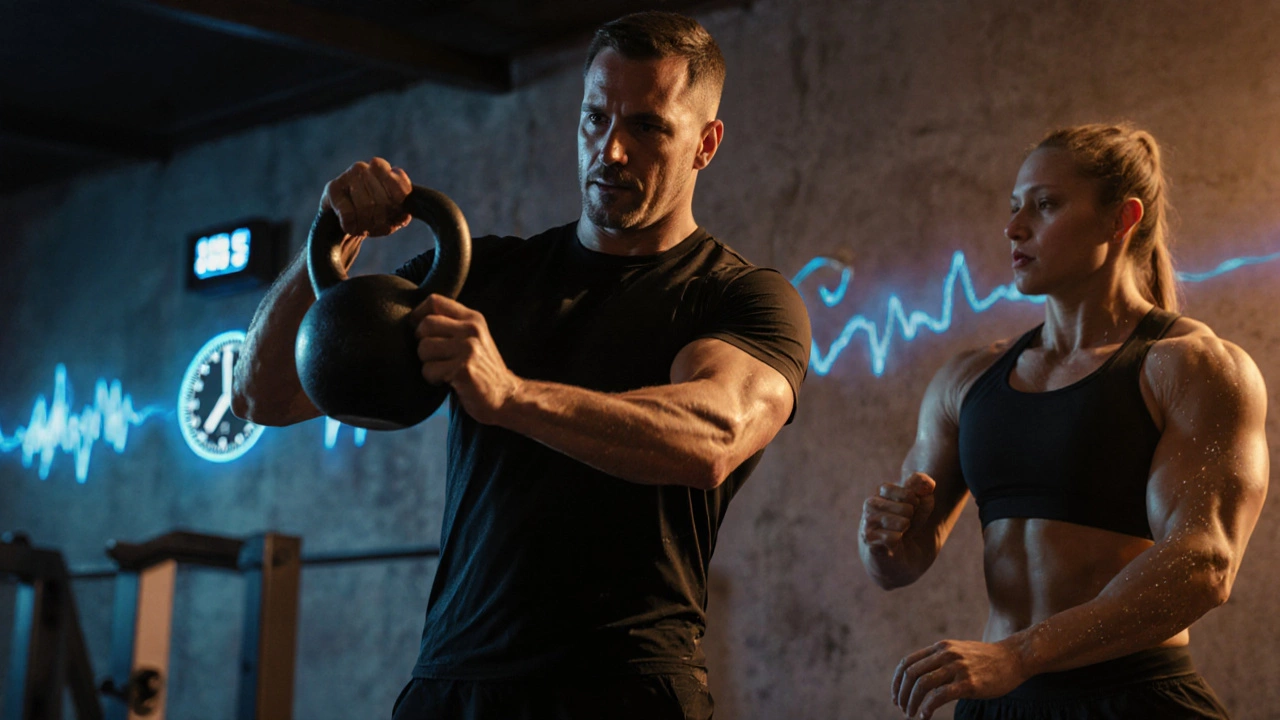
Calculate calories burned in a 30-minute high-intensity personal training session based on ACSM research and the article's findings.
Note: Based on ACSM research showing 30-minute high-intensity sessions can burn 300-500 calories.
Pro Tip: To maximize results, combine with pre-workout nutrition (20-30g carbs/protein) and proper recovery.
Personal Training is a one‑on‑one service where a certified coach designs and leads workouts tailored to your goals. Many wonder whether a 30‑minute personal training slot can actually move the needle on strength, stamina, and weight loss. The short answer? It depends on what you expect, how hard you push, and how the session is structured. Below we break down the science, the limits, and the tricks trainers use to squeeze maximum value out of a half‑hour.
Research from the American College of Sports Medicine (ACSM) shows that total weekly volume - minutes multiplied by intensity - predicts adaptations more reliably than duration alone. In other words, a 30‑minute high‑intensity workout can equal a 45‑minute moderate‑pace session if the heart rate stays in the target zone longer.
Two key variables drive the equation:
When intensity spikes, you tap fast‑ twitch muscle fibers, raise lactate, and trigger a cascade of hormones that boost Muscle Hypertrophy and Cardiovascular Fitness. That means even a short slot can spark real change, provided the trainer keeps the work blocks tight and the rest periods purposeful.
In a well‑designed 30‑minute session, a trainer typically follows a focus‑first, fatigue‑later pattern. The first 10-12 minutes hit the main goal - be it strength, cardio, or mobility - while you’re fresh. The remaining time fine‑tunes technique, adds a conditioning finisher, and wraps up with mobility work.
Here’s a typical breakdown:
This format can produce measurable gains in as little as four weeks. A 2023 ACSM meta‑analysis found participants who logged three 30‑minute high‑intensity sessions per week increased VO₂ max by an average of 8 % - comparable to longer, moderate‑intensity routines.
Short sessions aren’t a magic bullet. They struggle in a few scenarios:
If your aim is to gain significant muscle mass, you’ll likely need at least 45 minutes of volume to hit the 10-12 sets per muscle group widely recommended by strength specialists. Likewise, if you’re managing a high‑calorie diet for aggressive weight loss, you may need extra cardio time beyond a quick finisher.

Trainers use several proven tactics to boost efficiency:
By applying these, a 30‑minute slot often feels like a 45‑minute focused sprint.
Consider three clients who started with 30‑minute sessions three times a week.
All three hit measurable milestones, proving that a half‑hour can work - as long as the program aligns with their specific goals.

Before you book, run through this list:
If the answers are yes, you’re set to get real value from a 30‑minute slot.
Yes, if the workouts stay in a high‑intensity zone and you pair them with a modest calorie deficit. Most trainers recommend three 30‑minute HIIT‑focused sessions per week, which can burn 300-500 calories each.
Three times a week is a sweet spot for most goals. It gives enough stimulus for adaptation while allowing recovery days for muscle repair and growth.
Beginners can thrive on short sessions because they learn technique faster when fatigue isn’t overwhelming. The trainer can focus on form and gradually increase intensity as fitness improves.
You’ll likely need longer blocks for heavy lifts - around 45 minutes - but a 30‑minute session can still be useful if you focus on accessory work, mobility, and technique.
Recovery is crucial no matter the duration. Sleep, protein intake, and light stretching help translate the short stimulus into lasting gains.